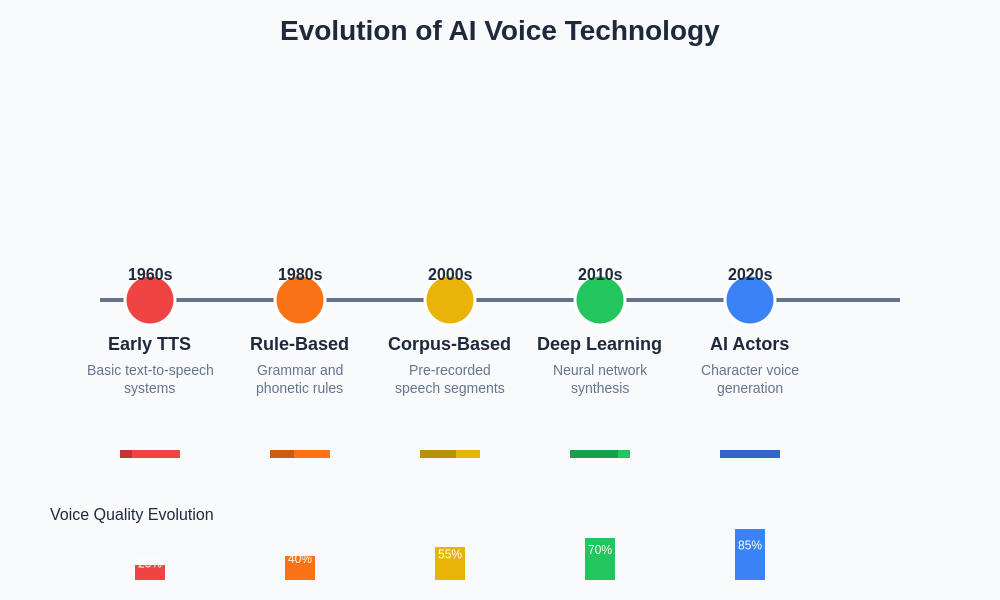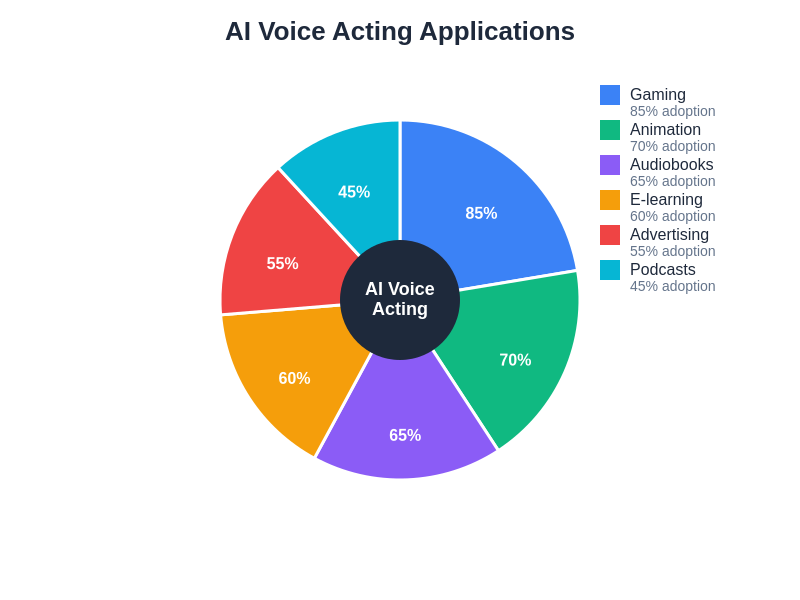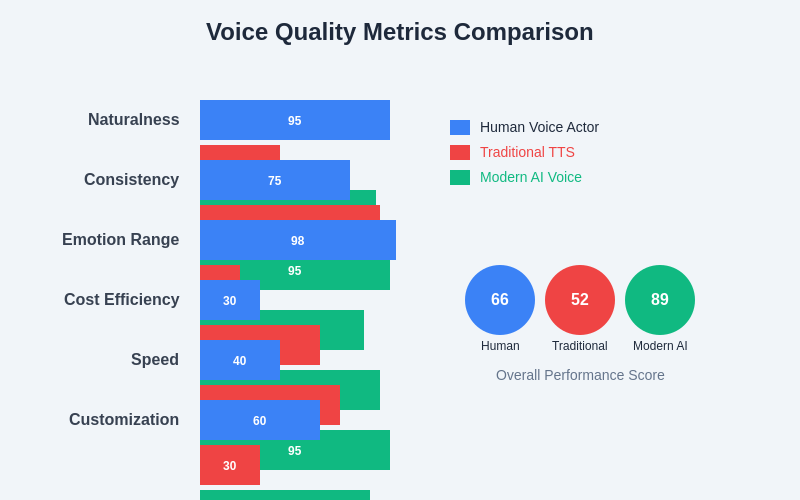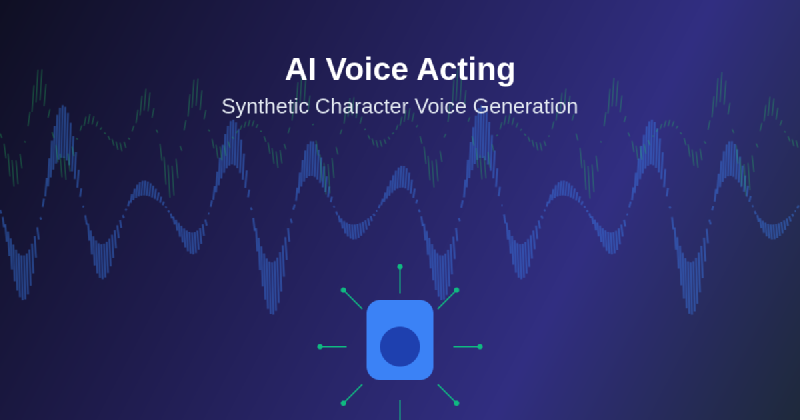The entertainment industry stands at the precipice of a revolutionary transformation as artificial intelligence fundamentally reshapes the landscape of voice acting through sophisticated synthetic character voice generation technologies. This groundbreaking advancement represents far more than a mere technological novelty; it embodies a paradigm shift that is redefining creative possibilities, production workflows, and artistic expression across gaming, animation, film, and interactive media platforms worldwide.
Explore the latest AI entertainment trends to understand how synthetic voice generation is becoming an integral part of modern media production pipelines. The convergence of advanced machine learning algorithms, neural network architectures, and sophisticated audio processing capabilities has created unprecedented opportunities for creators to bring characters to life with remarkable authenticity and emotional depth, challenging traditional boundaries between human and artificial performance.
The Evolution of Synthetic Voice Technology
The journey from primitive text-to-speech systems to today’s sophisticated AI voice actors represents decades of technological advancement and scientific breakthrough. Early voice synthesis technologies were characterized by mechanical, robotic outputs that bore little resemblance to natural human speech patterns or emotional expression. However, the integration of deep learning methodologies, particularly neural networks trained on vast datasets of human voice samples, has enabled the creation of synthetic voices that exhibit remarkable naturalness, emotional range, and character distinctiveness.
Modern AI voice generation systems leverage sophisticated algorithms that analyze not merely the phonetic components of speech but also the subtle nuances of human vocal expression, including breathing patterns, emotional inflections, accent variations, and speaking rhythm variations that contribute to authentic character portrayal. This comprehensive approach to voice synthesis has enabled the creation of synthetic characters that possess unique vocal identities, complete with personality-driven speech patterns and emotional responsiveness that rivals traditional human voice acting performances.
The technological foundation underlying contemporary synthetic voice generation relies heavily on advanced neural architectures, including transformer models, variational autoencoders, and generative adversarial networks that work in concert to produce highly realistic vocal outputs. These systems are trained on extensive datasets encompassing diverse linguistic patterns, emotional expressions, and vocal characteristics, enabling them to generate contextually appropriate responses with remarkable accuracy and believability.

The progression from primitive text-to-speech systems to sophisticated AI voice actors represents a remarkable technological journey spanning over six decades. Each advancement has built upon previous innovations, culminating in today’s systems that can generate character voices with unprecedented realism and emotional depth.
Transforming Entertainment Production Workflows
The integration of AI voice acting into entertainment production workflows has fundamentally altered how content creators approach character development, story narrative, and production scheduling. Traditional voice acting processes often require extensive coordination between talent agencies, recording studios, and production schedules, creating logistical complexities that can significantly impact project timelines and budgets. Synthetic voice generation has streamlined these processes by providing immediate access to consistent, high-quality vocal performances that can be generated on-demand without the constraints of human availability or geographic limitations.
Experience advanced AI capabilities with Claude to enhance your creative projects with intelligent voice generation and character development tools. The democratization of voice acting through AI technology has opened creative opportunities for independent developers, small studios, and content creators who previously lacked access to professional voice talent due to budget constraints or logistical limitations.
Contemporary game development studios have embraced synthetic voice generation as a solution to the challenge of creating extensive dialogue systems for expansive open-world games and interactive narratives. The ability to generate consistent character voices for hundreds or thousands of dialogue lines, while maintaining character personality and emotional authenticity, has enabled the creation of more immersive and responsive gaming experiences that adapt to player choices and narrative developments.
Revolutionizing Character Development and Storytelling
Synthetic voice generation has unlocked new dimensions of character development that extend beyond traditional voice acting limitations. AI systems can generate multiple vocal variations for individual characters, enabling dynamic personality shifts, age progression, emotional state changes, and even alternate universe versions of the same character with distinct vocal characteristics. This flexibility has empowered storytellers to explore complex narrative structures and character arcs that would be prohibitively expensive or logistically challenging to achieve through traditional voice acting methods.
The technology has particularly transformed the development of non-player characters in gaming environments, where the ability to generate contextual dialogue responses and dynamic character interactions has created more believable and engaging virtual worlds. AI voice actors can adapt their vocal performance based on in-game events, player relationships, and narrative context, creating a level of responsiveness and personalization that was previously impossible to achieve with pre-recorded dialogue systems.
Furthermore, synthetic voice generation has enabled the creation of characters with supernatural or non-human vocal characteristics that would be difficult or impossible for human actors to perform consistently. Alien species, mythological creatures, and fantastical beings can now possess authentic vocal identities that enhance immersion and believability while maintaining the emotional depth and personality development essential for compelling storytelling.
Enhancing Accessibility and Localization
The democratization of voice acting through AI technology has significantly enhanced accessibility and localization capabilities across the entertainment industry. Traditional localization processes for international markets often require extensive voice acting sessions with native speakers, creating significant costs and time delays for global content distribution. Synthetic voice generation systems can now produce high-quality localized content in multiple languages while maintaining character consistency and emotional authenticity across different linguistic markets.
This technological advancement has proven particularly valuable for content creators seeking to reach diverse global audiences without the traditional barriers associated with multilingual voice acting production. AI systems can generate character voices in dozens of languages while preserving the original personality traits and vocal characteristics that define each character, ensuring consistent user experiences regardless of linguistic preferences.
Additionally, synthetic voice generation has improved accessibility for individuals with hearing impairments through enhanced audio description capabilities and for those with reading difficulties through dynamic text-to-speech conversion that maintains character voices and emotional context. These applications extend the reach of entertainment content to previously underserved audiences while maintaining the artistic integrity and emotional impact of the original creative vision.
Technical Innovations and Quality Improvements
The rapid advancement of synthetic voice generation technology has been driven by continuous innovations in machine learning architectures, audio processing algorithms, and training methodologies. Modern AI voice systems incorporate sophisticated attention mechanisms that enable precise control over vocal characteristics such as pitch variation, speaking pace, emotional intensity, and acoustic environment adaptation. These technical improvements have resulted in synthetic voices that exhibit human-like variability and spontaneity, avoiding the monotonous repetition that characterized earlier generation systems.
Discover comprehensive AI research capabilities with Perplexity to stay updated on the latest developments in voice synthesis technology and machine learning applications in entertainment. Contemporary systems utilize advanced preprocessing techniques that analyze the acoustic properties of target environments, enabling synthetic voices to adapt to different spatial contexts, acoustic conditions, and audio production requirements seamlessly.
Recent developments in few-shot learning and transfer learning have dramatically reduced the amount of training data required to create new character voices, enabling rapid prototyping and iteration during the creative development process. These technological improvements have made synthetic voice generation more accessible to smaller production teams while maintaining professional-quality output standards that meet industry expectations for commercial entertainment products.
Impact on Gaming and Interactive Media
The gaming industry has emerged as one of the most significant beneficiaries of advanced synthetic voice generation technology, with developers leveraging AI voice actors to create more immersive and responsive gaming experiences. Modern role-playing games and open-world adventures often feature extensive dialogue trees, branching narratives, and dynamic character interactions that would be prohibitively expensive to fully voice using traditional methods. Synthetic voice generation enables comprehensive voice coverage for these complex systems while maintaining character consistency and emotional authenticity throughout extended gameplay sessions.

The distribution of AI voice acting applications across different industries demonstrates the technology’s versatility and growing adoption. Gaming leads the adoption curve, followed by animation and audiobook production, with emerging applications in e-learning and advertising showing significant potential for future growth.
Real-time voice generation capabilities have enabled the development of truly dynamic dialogue systems where character responses can be generated based on specific player actions, choices, and game state variables. This advancement has moved beyond simple pre-recorded response selection to genuine conversational AI that can maintain character personality while adapting to unique player interactions and narrative developments.
The technology has also facilitated the creation of personalized gaming experiences where synthetic characters can reference player-specific information, previous gameplay events, and individual preferences in their dialogue delivery. This level of personalization was previously impossible to achieve through traditional voice acting methods due to the astronomical number of potential dialogue variations required for truly individualized experiences.
Applications in Animation and Film Production
Animation studios and film production companies have embraced synthetic voice generation as a powerful tool for pre-production planning, temporary audio tracks, and specialized character voices that require supernatural or non-human characteristics. The technology enables directors and animators to experiment with different vocal approaches during the creative development process without the need for expensive voice acting sessions or the constraints of actor availability during iterative revision cycles.
Synthetic voice generation has proven particularly valuable for creating consistent character voices across extended production schedules, ensuring continuity when recording sessions are separated by months or years. This consistency is essential for animated series, film franchises, and episodic content where character voice stability directly impacts audience engagement and narrative believability.
The technology has also expanded creative possibilities for character design by enabling voice characteristics that would be physically impossible or extremely challenging for human actors to perform consistently. Robotic characters, alien species, and fantastical creatures can now possess authentic vocal identities that enhance storytelling while maintaining the emotional depth and personality development essential for compelling character arcs.
Ethical Considerations and Industry Standards
The emergence of synthetic voice generation technology has prompted important discussions regarding ethical considerations, consent protocols, and industry standards for AI-generated content. Questions surrounding voice ownership, compensation models, and creative attribution have become increasingly relevant as the technology approaches parity with human performance quality. The entertainment industry has begun developing frameworks for ethical AI voice usage that respect the rights and contributions of human voice actors while embracing the creative possibilities offered by synthetic alternatives.
Professional voice acting organizations and entertainment unions have engaged in constructive dialogue with technology developers and content creators to establish guidelines that protect performer rights while enabling innovative applications of synthetic voice technology. These discussions have focused on creating sustainable coexistence between human talent and AI systems that leverages the unique strengths of both approaches to voice acting and character creation.

The comparative analysis of voice quality metrics reveals that modern AI voice generation has achieved remarkable parity with human performance in several key areas, while offering superior consistency and cost efficiency. This technological advancement positions AI voice acting as a complementary rather than replacement technology for human talent.
The development of transparent disclosure practices has become essential for maintaining audience trust and ensuring that consumers are informed about the use of synthetic voices in entertainment content. Industry leaders have advocated for clear labeling and attribution standards that acknowledge both the technological innovations and human creative contributions that contribute to final entertainment products.
Future Innovations and Technological Convergence
The trajectory of synthetic voice generation technology points toward increasingly sophisticated capabilities that will further transform entertainment production and creative expression. Emerging research in real-time voice conversion, emotional intelligence integration, and contextual adaptation promises to create AI voice actors that can respond dynamically to live performance contexts, interactive environments, and user emotional states with unprecedented authenticity and responsiveness.
The convergence of synthetic voice generation with other AI technologies, including computer vision, natural language processing, and behavioral modeling, is creating opportunities for fully integrated AI performers that can deliver coordinated vocal and visual performances. These developments suggest a future where synthetic characters may possess comprehensive performance capabilities that span voice acting, facial animation, and behavioral expression in unified, coherent character presentations.
Advanced personalization capabilities are emerging that will enable synthetic voices to adapt to individual audience preferences, cultural contexts, and accessibility requirements while maintaining character integrity and narrative consistency. These innovations promise to create more inclusive and engaging entertainment experiences that can accommodate diverse audience needs without compromising artistic vision or production quality.
The continued advancement of synthetic voice generation technology represents a fundamental shift in entertainment production methodologies that will likely influence creative processes, business models, and artistic expression for decades to come. The successful integration of these technologies with human creativity and traditional production expertise will determine how effectively the entertainment industry can leverage these innovations to enhance rather than replace the human elements that remain essential for compelling storytelling and emotional connection.
As the technology continues to evolve, the entertainment industry faces the exciting challenge of balancing technological innovation with artistic integrity, ensuring that synthetic voice generation serves to expand creative possibilities rather than diminish the human creativity and emotional authenticity that form the foundation of compelling entertainment experiences. The future of AI voice acting lies not in replacement of human talent but in the intelligent augmentation of creative capabilities that enable new forms of artistic expression and storytelling innovation.
Disclaimer
This article is for informational purposes only and does not constitute professional advice. The views expressed are based on current understanding of AI voice generation technologies and their applications in entertainment production. Readers should conduct their own research and consider their specific requirements when implementing synthetic voice generation tools. The effectiveness and suitability of AI voice acting solutions may vary depending on specific use cases, project requirements, and individual creative objectives. Always consider ethical implications and industry standards when utilizing synthetic voice generation technologies.
